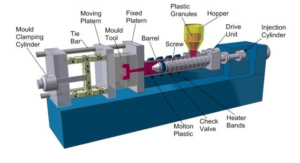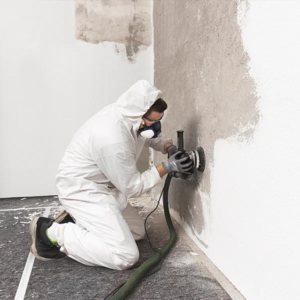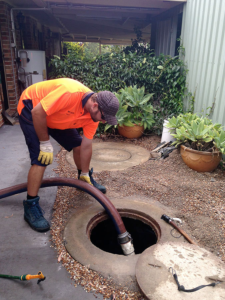Erie Metal Roofing is an investment for home and building owners. It protects structures from extreme weather conditions, saves energy costs in the summer by reflecting sunlight, and provides great curb appeal for a property’s exterior.
Regular roof maintenance helps catch problems and fixes them before they become more expensive repairs. Inspecting a metal roof regularly will help keep it looking its best for years to come!

If you’re looking for a roof that can withstand harsh weather conditions and lasts three times longer than asphalt shingles, a metal roof is the perfect choice. Its longevity means that it can provide long-term protection for your home and save you money in the long run. It’s also environmentally friendly and easy to recycle at the end of its lifespan.
The durability of a metal roof depends on the quality of materials and proper installation. A good quality copper or zinc roof will last for decades, while an aluminum roof can withstand up to 60 years of exposure. The best way to ensure that your metal roof is installed correctly is to work with an experienced roofing contractor.
A metal roof can withstand high winds and hail without batting an eyelash. The material is also fire resistant and reduces cooling costs by up to 25% by reflecting radiant heat away from the house. These energy savings mean that the initial investment pays off in a short time.
Unlike shingle roofs, metal is also water-resistant and won’t fade due to sunlight or rain. Its rust-resistant coating can protect against the elements, while its sleek appearance can enhance your curb appeal. The special alloys that make metal roofs rust-resistant can even help to keep the color intact for as long as the roof is in place.
When pitted against classic choices like shingle roofs, metal roofing wins every time – kind of like the tortoise beating the hare in the race to the finish line. With lifespans up to 70 years and resistance to harsh UV rays, metal roofs can keep on protecting your home for generations.
Of course, it’s not just the metal roof that is resilient; the homeowner can do their part by performing routine inspections and keeping up with maintenance tasks. These can include cleaning gutters, trimming branches that could rub against the roof and cause premature rust, or simply keeping an eye out for signs of wear or damage. A well-maintained metal roof can be as strong as a rock star’s career, and it’s worth the effort to invest in this durable material to protect your home for decades.
Aesthetics
Modern metal roofs offer an array of color options that can complement any home design. From neutral shades that accentuate the architectural lines of a property to bold hues that make a striking statement, there’s a metal roofing solution for every homeowner.
The beauty of a metal roof extends beyond its durability and energy efficiency. Metal roofs come in a variety of colors that complement any home’s architecture and enhance the surrounding scenery. For example, a sierra tan metal roof offers a natural look that pairs well with stone, brick, or stucco exteriors. Conversely, colonial red metal roofs add a bold accent to homes with neutral siding colors and a contemporary flair.
Homeowners and architects can unleash the full potential of their architectural vision with the aesthetic versatility of metal roofing. A wide range of styles, including the traditional corrugated panel, curved roof panels, and standing seams, complements a diverse set of architectural styles.
Moreover, the durable material resists corrosion and rust, making it an ideal roofing option for properties that are exposed to the elements. The enduring appeal of a metal roof can also improve a home’s curbside appeal by reflecting sunlight and enhancing the colors of the landscape.
In addition to its visual appeal, a metal roof can help reduce energy costs by reflecting sunlight and minimizing heat absorption. However, the color of a metal roof can play a significant role in its impact on a property’s energy performance. Lighter colors reflect more sunlight, which can be helpful in lowering cooling bills during warmer months. On the other hand, darker colors absorb more solar energy and can increase heating costs during colder weather.
When selecting a metal roofing system, homeowners and architects must consider the material, construction, and maintenance requirements of the structure. Aluminum is lightweight, low-cost, and corrosion-resistant, making it a great choice for homes located in coastal areas. Steel is strong and versatile, but requires more frequent maintenance than aluminum. Zinc is another metal that offers durability and a timeless style, but is susceptible to rust.
As an alternative to shingles, metal roofing offers the best combination of functionality and aesthetics. Thanks to its longevity and extensive color choices, a metal roof can boost a residential or commercial building’s resale value.
Energy Efficiency
When choosing a roofing material, many homeowners are looking for a roof that will save energy. The best option is to go with a metal roof, which is more efficient than other roofing materials. This is largely due to the fact that it reflects sunlight and helps reduce heat gain in buildings, allowing you to use less air conditioning. In addition to this, a metal roof can be insulated to improve its energy efficiency even further.
It is also important to note that metal roofs are very fire-resistant and do not attract lightning like shingles can. This is one of the most important factors to consider if you live in an area with high fire risks. In fact, metal roofing is often preferred by those who are at risk of wildfires because it can help protect their homes more effectively. Another benefit is that a metal roof can be more effective at insulating if the underlayment is properly installed. This is the layer of material that is placed between the bare roof deck and the roofing material. There are several different types of underlayment, including asphalt-saturated felt, paper, and synthetic.
Moreover, a metal roof is highly resistant to wind damage, which is another important factor when considering a new roof. Unlike shingles, metal roofs are designed to withstand winds up to 120 mph without sustaining serious damage. This is ideal for those who live in an area that experiences frequent storms and high winds.
In addition, a metal roof can be used with solar panels to maximize the amount of energy it produces and lower its carbon footprint. In this way, a metal roof can become an energy-efficient home or business that can actually pay for itself over time.
Ultimately, it is a good idea to explore all the options available when choosing a new roof for your home or commercial building. With so many benefits, it is worth investing in a metal roof to save money, improve your property’s aesthetics, and increase its energy efficiency. So if you are ready to explore your options, contact Sheffield Metals for more information about coated and bare metal roofing, and how it can fit into your architectural design plans.
Maintenance
A metal roof requires annual maintenance to perform well and look good. It is best to have a professional roofer do this work, but homeowners can also perform some of these tasks.
A key aspect of any maintenance plan is to keep dirt, mildew, and other debris from accumulating on the surface of the metal panels. This will prevent scratches, dents, and rust that can occur over time. In addition, regularly remove organic materials from gutters and drains to prevent clogs. Gutters can also clog with leaves, sticks, and other materials that can cause water to build up on the roof and lead to corrosion, rust, and leaks.
Another element of metal roofing maintenance is to inspect the panels and seams to make sure they are not loose or separating. This can be done during a regular inspection, or by a trained eye during an emergency. If a panel is separating or the seams are not tight, they should be repaired immediately to avoid water intrusion into your home.
If your roof has exposed fasteners, such as rivets and screws, they should be inspected to ensure that the head is still in place and the sealant is intact. These can all degrade over time, and this allows moisture to penetrate your metal roof and corrode the underlying material. Using a roof caulking system that includes a gasket washer can help to protect these areas from moisture penetration.
The flashing of a metal roof, which consists of strips of metal installed along the edges and joints as well as around penetrations like chimneys, vents, skylights, and pipes, can also deteriorate over time. A good roofer will routinely check these areas for cracks, lifting, and rust and repair or replace them to maintain a watertight seal.
Finally, it is essential to keep trees and other plants away from a metal roof to avoid damage during storms and high winds. These can knock or tear off sections of the roof, or they may scratch the paint and cause rust. Also, branches that hang over the roof should be trimmed to keep them from rubbing or scraping the surfaces.








